A Southern Rhône With Substance, But No Pretense: Lirac, a Stone’s Skip Across The Water From Châteauneuf-du-Pape, Emerges From Its Neighbor’s Shadows. A Dozen Lyrical Liracs From Eight Growers For $299
Join Us for Saturday Sips: Lyrical Lirac
Come as you are; come any time that’s convenient for you during our business hours to sample selection from this week’s selections. Our staff will be on hand to discuss nuances of the wines, the terroirs reflected, and the producers.
In the past, Côte du Rhône was a fairly predictable commodity—a light, spicy, quaffable wine suited for bistros and patios. They were carafe wines, generally without pretentions to greater heights of sophistication.
These days, with warming weather and a new generation of quality-savvy winemakers on site, it is increasingly possible to track down wines from Southern Rhône that have found the balance between superb terroir expression and user-friendly accessibility. Lirac (Châteauneuf-du-Pape bumpkin cousin from across the Rhône) is ground zero for these improvements.
This week’s package contains examples of grower/producers who have maintained a love for what Lirac has represented in the past, with a sharp focus on sustainability so that the future will be even more lustrous.
The Southern Rhône: The Sunny Side of France
Grenache, the mainstay of Southern Rhône, is a gregarious and seductive grape. Imbued with a bright disposition and a sunny profile, Grenache thrives in warm climates where it spreads its wings in a panoply of fruit and floral expressions.
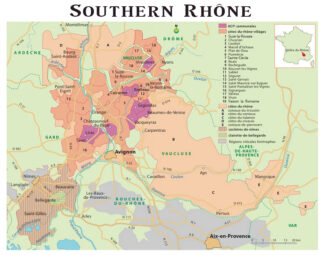
And Southern Rhône is not only warm, it is growing more so with climate change (along with the rest of the world). This steady annual increase in temperature has expanded the possibilities for Rhône viticulture into the diversity of hillside terroirs rimming the Rhône valley, while growers in the traditional confines must contend with shorter ripening cycles that must be monitored carefully to avoid blowsy wines with lower acidity levels. Acid, of course, provides the balance to the sweet fruit-bombs for which Southern Rhône is known, from mighty Châteauneuf-du-Pape to generic Côte du Rhône.
Lirac: Emerging From the Shadows of CdP Into Something Different
What if the family across the street decided to tear down their bungalow and erect a fifty room castle in its place? That may well describe the sensation of being Lirac.
Just across the Rhône from Châteauneuf-du-Pape, about six miles north of Avignon, Lirac is equally well-endowed with high sunshine levels during the summer (and into the harvest months) and, as a hedge against overheating, the same legendary Mistral wind from the north blows through Lirac as it does through CdP, on average 180 days in the year, significantly reducing mildew threats. With such advantages, it is no wonder that Lirac is emerging from the shadow cast by its famous neighbor and becoming a unique appellation with a voice all its own.
Lirac terroir is largely built around elevation; vineyards on the upper terraces of the appellation are made up of red clay and the large pebbles known as ‘terrasses villafranchiennes’, with the soil of the lower vineyards gradually showing more loess and/or clay-limestone. All are prone to summer drought and, under certain strictures, irrigation is allowed.
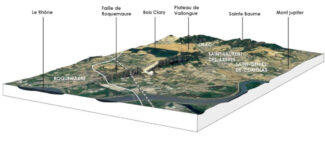
“Lirac is experiencing a Renaissance,” explains Rodolphe de Pins of Château de Montfaucon, “Few people know about Lirac wines, but that is changing. Our wines are transportive—Rhône power with Burgundy finesse.” To say that the wines of Lirac are lyrical is not just a pun; the noted combination of elegant perfume and savory grace softens the might.
Although often singled out for rosé (said to resemble Tavel pink), 87% of what Lirac produces is red, built around the usual suspects—Grenache, Mourvèdre and Cinsault. Grenache must make up a minimum of 40% of the blend while Syrah and Mourvèdre must be over or equal to 25%. The region boasts just over 90 viticulturists and 50 producers (six of which are cooperatives) and the wines, though frequently styled after CdP, are more approachable in their youth.
Domaine Roger Sabon
Lirac wines are also considerably cheaper than those of Châteauneuf du Pape, even when similarly weighty. It stands to reason that land in Lirac is also more reasonably priced, and many (perhaps most) CdP producers also own vineyards across the river.
One such domain is Roger Sabon, founded in 1952 and currently run by Roger’s sons Denis and Gilbert. Sabon’s son-in-law Didier Négron is the current winemaker; Denis and his son Julien oversee the farming while Gilbert and his niece, Delphine, run the office.
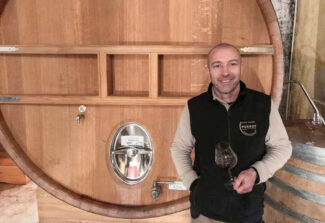
Didier Négron, head winemaker at Domaine Roger Sabon
Although most of the Sabon holdings are in northeastern Châteauneuf-du-Pape where the soils are sandy with a high concentration of limestone, they also own 20 acres in Lirac. About these wines, Didier Négron says, “Lirac’s relatively more ethereal and delicate expression means that it often remains in the shadows of Châteauneuf, and we work for a fine and subtle wine in Lirac. In fact, we plant on gravelly clay-limestone soils quite similar to Châteauneuf-du-Pape. So rather than make a blockbuster wine from this material, we allow Lirac to be Lirac in all its delicate and floral aromatics and earthy fruit flavors.”
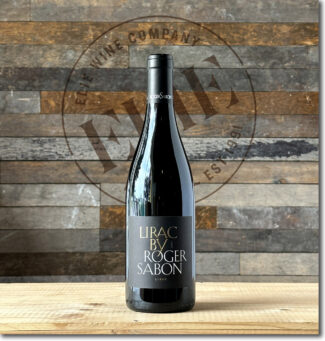 Domaine Roger Sabon ‘Lirac by Roger Sabon’, 2021 Lirac ($23)
Domaine Roger Sabon ‘Lirac by Roger Sabon’, 2021 Lirac ($23)
A Grenache-dominant blend augmented by spicy accents of Syrah, Mourvèdre and Carignan, the grapes are hand-harvested from vines (with an average age of fifty years) grown on red clay, limestone and galets. In the cellar, the grapes spend a 30-day maceration period with daily rémontage, followed by nine months in foudres and neutral French oak demi-muids. The wine shows enticing aromas of ripe cherries, fresh raspberries and especially garrigue, the savory wild herbs of Provençal hillsides. In the mouth, ripe berry flavors are predominant, infused with hints of chocolate, exotic spices, fennel and wood smoke.
Domaine de Marcoux
Terroir as defined by Le Petit Larousse: “The combination of the soil of a circumscribed area of vines and its corresponding climate, which gives a specific character to the wine produced by it.”
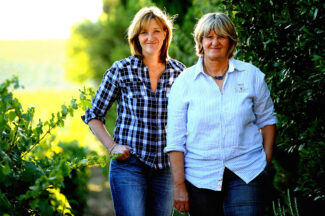
Sophie and Catherine Armenier, Domaine de Marcoux
This is the philosophy on which Domaine de Marcoux operates. In 1995, at a time when it was still not straightforward for women to work in a winery, Sophie and Catherine Armenier took over running Domaine de Marcoux, with Catherine chiefly managing the vines, while Sophie was the winemaker. In 2014, Sophie’s son Vincent Estevenin took his place alongside his mother and aunt, bringing youth, passion and skills to the winery. Today the domain encompasses 67 acres split into over 20 parcels, most lying in the heart of prime Châteauneuf-du-Pape terroir on the La Crau plateau. The remainder is in Lirac and other Côtes du Rhône villages.
Certified by Ecocert in 1991, this year marks four decades of rigorous organic and biodynamic principles.
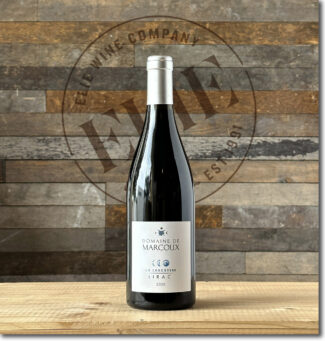 Domaine de Marcoux ‘La Lorentine’, 2020 Lirac ($32)
Domaine de Marcoux ‘La Lorentine’, 2020 Lirac ($32)
Clustered in the comb of Balouvière near the village of Saint Laurent des Arbres and owned solely by Domaine de Marcoux, the vineyard covers nearly 20 acres of soils rich in sands, gravels and limestone scree. Vinification is virtually identical to that used with their Châteauneuf-du-Pape cuvées: no yeast addition, temperature-controlled alcoholic fermentation, and daily pumping-over. The wine is matured in concrete vats and foudres and then bottled 15 months after the harvest; it shows sweet, ripe raspberries and blackberries up front, underscored by a mineral freshness and top notes of cinnamon, nutmeg and ginger.
Domaine Giraud
The estate may be considered the love-child of Pierre and Mireille Giraud, the union of two venerable wine families. Pierre Giraud can trace his winemaking roots back six centuries while Mireille Buou’s family owned a village distillery for several generations. In 1974, the couple began to cultivate ten acres as sharecroppers, and over the course of a dozen years, acquired local land. In 1981, they transformed the Buou distillery into a winemaking operation, and first released a bottling under the name Domaine Giraud.
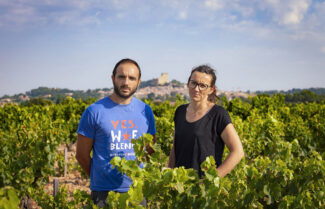
Pierre and Mireille Giraud, Domaine Giraud
Among their plots, Pierre and Mireille inherited twenty acres of century-old vines located on the plateau of La Crau, Les Galimardes and on the sandy soils of the Pignan area near the Le Rayas district. In 1998, the couple turned the everyday administration of the domain to their children, Marie and François, both with degrees in viticulture and oenology. The work of plot selection as well as a transition to organic farming is now tasked to the new generation.
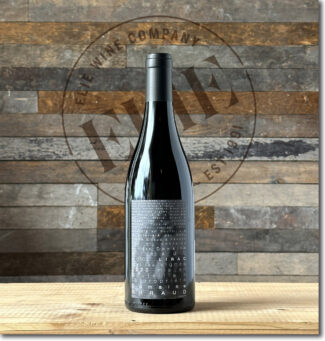 Domaine Giraud ‘Les Sables d’Arène’, 2020 Lirac ($27)
Domaine Giraud ‘Les Sables d’Arène’, 2020 Lirac ($27)
Once made entirely from Grenache vines planted in 1950 in a sandy part of Lirac, ‘Les Sables d’Arène’ had to get with the program: Mono-varietal wines are not permitted under AOP rules. Beginning with the 2018 vintage, Les Sables d’Arène is now officially a Lirac since a neighbor leased his old vines of Syrah and Mourvèdre to Domaine Giraud. Depending on yields, Sables d’Arène is about 2/3 Grenache with the remainder equal parts Syrah and Mourvèdre. It retains its characteristic bright floral and bright cherry aromas with touches of bay laurel and peppery tannins.
Domaine Pierre Usseglio
A decade before World War II began, Italian Francis Usseglio left Italy and went to work for Châteauneuf-du-Pape, and in 1948, shortly after the war ended, he bought his own vineyards. Later, his son Pierre took over the domain and gradually increased the size to 96 acres, mostly in CdP.
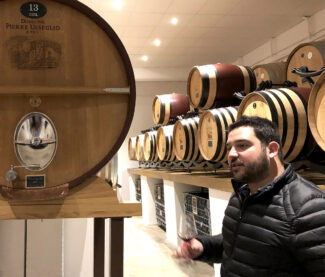
Jean-Pierre Usseglio, Domaine Pierre Usseglio
The quintessence of Usseglio art is the conviction that the sum of parts is greater than the whole. As such, Domaine Pierre Usseglio maintains 60 acres in 17 individual lieux-dits with one plot set aside for the production of white wine. The red-wine holdings are planted to 80% Grenache, 10% Syrah, 5% Mourvèdre, 5% Cinsault; vine age ranges from 30 to 75 years. A sizeable portion of the CdP vineyard sits within La Crau, at the ancient confluence of the Durance and Rhône rivers; the rest climbs the hill across the road from the actual ruins of the castle from which Châteauneuf-du-Pape gets its name.
The estate also owns acres in Lirac. Says Jean-Pierre: “We work our vineyard manually, and with respect throughout the seasons. We let nature express itself freely. It is thanks to this difference in terroir that we can offer complex, silky and balanced wines; our vines are spread across multiple sites where the soils range from limestone and rolled pebbles, to sand and sandstone flecked with clay. These are the voices of the earth and we are committed to listening.”
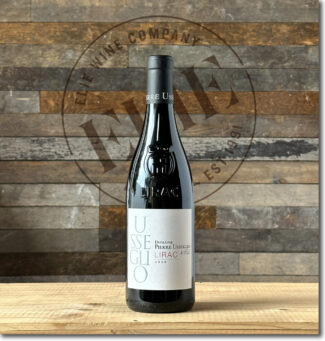 Domaine Pierre Usseglio, 2020 Lirac ($33)
Domaine Pierre Usseglio, 2020 Lirac ($33)
A blend of 50% Grenache and the rest an equal amount of Cinsault and Syrah. A plush, velvety wine that shows hints of vanilla and licorice to accent plummy fruit with an edge of graphite and smoke and a steely, mineral-driven undercurrent.
Domaine du Clos de Sixte
Established in the northern part of Châteauneuf-du-Pape (in the commune of Orange) Alain Jaume’s family has been dedicated to the art of viticulture since 1826. Founded by Mathieu Jaume, the Domaine is now run by the 5th and 6th generations of Jaumes, Alain Jaume and his children Christophe, Sébastien, and Hélène.
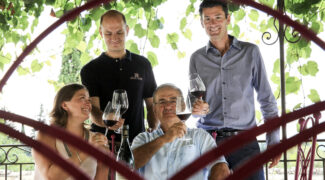
Alain Jaume and his children Christophe, Sébastien, and Hélène,Domaine du Clos de Sixte
Today the estate now sprawls across 225 acres in four appellations, Châteauneuf-du-Pape, Côtes-du-Rhône, Vacqueyras and Lirac. The Lirac acreage is bottled under the Domaine du Clos de Sixte label; Clos de Sixte vineyards are grown in accordance with certified organic agricultural practices. Says Alain, “The soils are maintained exclusively by light plowing and fertilized with vegetal compost. The vines are only sprayed when there are justified risks to the health of the vines, and only organic-permitted treatments are used. Yields are low or kept under control by green-harvesting. This method, carried out by hand in summer, provides optimum sun exposure for the best clusters and enables the winery to be selective on both quantity and quality of the grapes. Harvesting is by hand, from pruning the leaves to aerate the clusters to picking and sorting grapes and selecting only the best to press.”
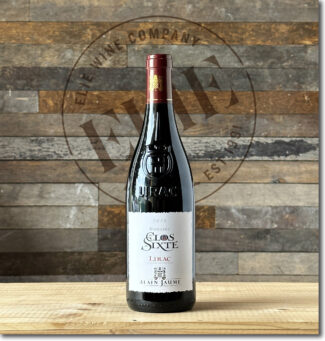 Domaine du Clos de Sixte, 2019 Lirac ($23)
Domaine du Clos de Sixte, 2019 Lirac ($23)
50% Grenache, 35% Syrah, 15% Mourvèdre grown on limestone and alluvial soils with quartz, sand and rock. Jaume employs traditional wine-making techniques, hand sorting and destemming whole bunces and allowing 18 days of vatting with pigéage, then aging in concrete vats and French oak barrels (30% new) for 16 months. A creamy and supple Lirac with floral notes beside rich flavors of raspberry and apricot and steadily building tannins that shore up the wine’s lengthy finish.
Domaine Corne-Loup
‘Corne Loup’ (Wolf Horn) was the name given to a certain part of Tavel in days gone by, a wolf sighting was announced by a blast from the horn. This tradition had largely gone out of fashion by 1966 (wolves were hunted to extinction in France by the 1930s), the year the Lafond family purchased a few vine acres in Tavel and initially sold the grapes to a cooperative. Shortly, they saw the sense in bottling under their own label, and today, Jacques Lafond runs the winery with help from his daughter and winemaker, Géraldine Saunier.
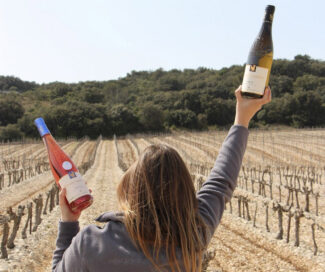
Géraldine Saunier-Lafond, Domaine Corne-Loup
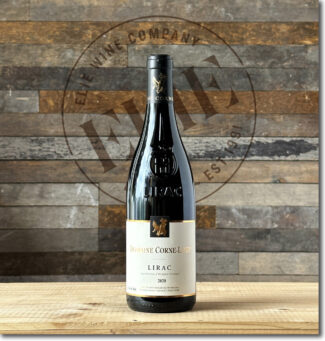 Domaine Corne-Loup, 2020 Lirac ($18)
Domaine Corne-Loup, 2020 Lirac ($18)
50% Grenache, 40% Syrah and 10% Mourvèdre grown on sandy marl, with vines averaging forty years old (and the oldest over eighty). The wine is luscious with mulled berry and wild herbs, showing peppery dark cocoa on the back end.
Domaine Maby
Maintaining healthy vines and high quality grapes, the key to producing great wine, is a veritable obsession at Domaine Maby. Richard Maby maintains, “The work carried out at the vineyard goes on throughout the year to ensure this essential, requiring skill and consistency. We engage in sustainable winemaking, favoring natural vineyard maintenance techniques; use of plant care products is limited to a minimum and vineyard work is fully manual.”
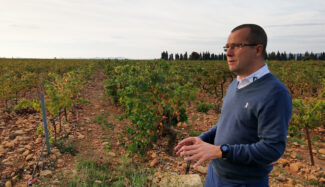
Richard Maby, Domaine Maby
The history of the estate mirrors many in Rhône. When the Maby family first settled in Tavel in the 19th century, their wine production was mainly intended for home consumption and a local clientele. Auguste Maby was the first to actually make a living from it. Initially produced in the family home, the wine was sold throughout the region under the name of Clos du Palai—a reference to the location of the vineyards. After the Second World War, Domaine Maby was officially launched by Armand Maby, who developed a modern, functional winery and acquired new plots of vines. In the 1960s, Armand was joined by his son Roger and his sons-in-law. The estate was further extended into the magnificent pebbled terroir of Lirac. In 2005, Roger’s son Richard Maby joined the estate. After fifteen years spent in finance, and driven by his love of wine and the very special potential of Lirac and Tavel, he brought new energy to the estate and a modern style to his wines.
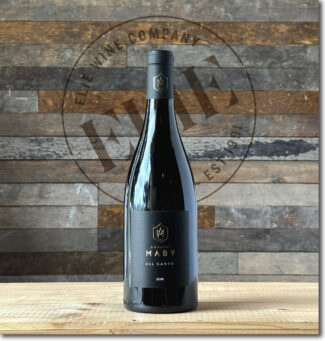 Domaine Maby ‘Bel Canto’, 2018 Lirac ($39)
Domaine Maby ‘Bel Canto’, 2018 Lirac ($39)
100% Grenache from vines that average 55 years old; aged in demi-muids for eight months. Rich waves of blackberry and plum are sharpened with mineral notes and softened with cedar. A beautiful wine today that should improve steadily with several more years of maturing.
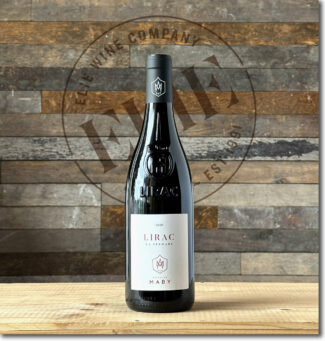 Domaine Maby ‘La Fermade’, 2020 Lirac ($21)
Domaine Maby ‘La Fermade’, 2020 Lirac ($21)
55% Grenache, 25% Syrah and 25% Mourvèdre, with the remaining five percent a field blend. ‘La Fermade’ refers to a previously-wooded plot that was cleared and replanted with Grenache, Mourvèdre, Syrah and Piquepoul in the 1970s; those vines are now fully mature and produce low yields of intense fruit with balancing acidity. The wine shows a rich nose of baking spice and blackberry syrup; on the palate there is cassis, black cherry, garrigue and an undercurrent of wet stone.
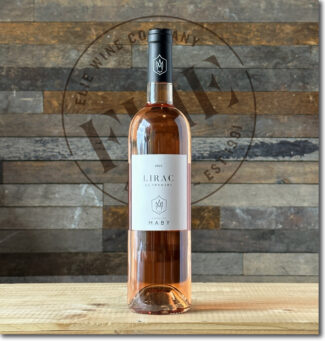 Domaine Maby ‘La Fermade’, 2021 Lirac Rosé ($20)
Domaine Maby ‘La Fermade’, 2021 Lirac Rosé ($20)
90% Cinsault, 10% Grenache. Light-bodied and bone dry, ‘La Fermade’ offers cutting berry and cherry flavors that linger on a softly tannic, peppery finish.
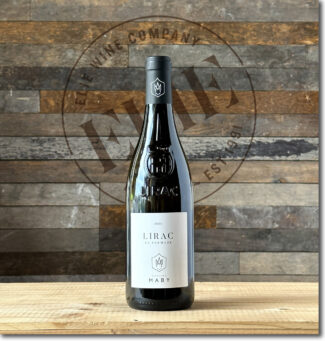 Domaine Maby ‘La Fermade’, 2021 Lirac Blanc ($20)
Domaine Maby ‘La Fermade’, 2021 Lirac Blanc ($20)
A blend of Clairette, Picpoul Blanc, Grenache Blanc, the wine bursts with plump, juicy melon and white peach, creating a honeyed richness that is offset by an herbal and mineral edge.
Domaine de la Mordorée
GSM represents the Big Three in Southern Rhône, but at Domaine de la Mordorée, the most significant trio is Christophe and Fabrice Delorme along with their father Francis. In 1986, they purchased an estate in Tavel with the intention of producing world-class wine while remaining dedicated to an ecologically-sound stewardship of their land. The success of the venture may be measured by the glowing praised heaped upon them by Robert Parker Jr. in 2007: “With 135 acres spread throughout some of the most impressive appellations of the Southern Rhône, Christophe Delorme and his brother have produced one exquisite wine after another. Of course, the top cuvées of Châteauneuf-du-Pape are rare and expensive, but this is a place to find terrific Côtes du Rhônes and Liracs as well. Delorme is equally adept at dry whites as well as reds, and turns out some stunning rosés both under the Côtes du Rhône and Tavel appellations.”
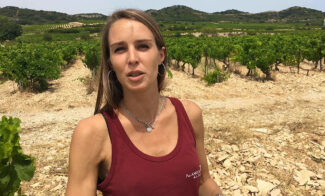
Ambre Delorme, Domaine de la Mordorée
With the untimely passing of Christophe in 2015, his daughter Ambre has stepped in; also invaluable to the current team is winemaker Rémy Chauvet, who worked as Christophe’s cellar manager. The 135 acres mentioned by Parker Jr. cover 38 parcels in Tavel, Châteauneuf-du-Pape, Lirac, Côtes-du-Rhone and Condrieu; the variety of terroirs thus explored make trellising a vital consideration. Says Fabrice, “Goblet training is used for older, untrellised vineyards, with the canopy remaining free, a traditional pruning method provides better resistance to wind and drought and lesser sensitivity to trunk diseases. Cordon de Royat training is used for newer, trellised vineyards. The newer method allows for higher vines, leaving a larger leaf surface exposed to the sun, which yield colorful grapes that are richer in tannins and in sugar. Exposure to sunlight also produces healthier grapes and allows a greater development of aromas.”
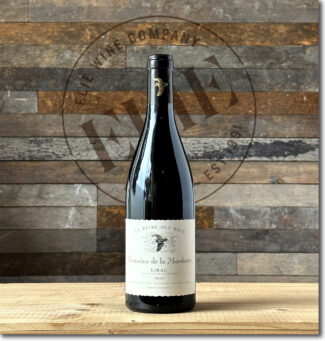 Domaine de la Mordorée ‘La Reine des Bois’, 2019 Lirac ($37)
Domaine de la Mordorée ‘La Reine des Bois’, 2019 Lirac ($37)
40% Syrah and 30% each of Grenache and Mourvèdre grown on 40-year-old vines among the famous ‘galets roulés’—large stone pebbles—that mark this part of the Rhône’s sand and clay soils. While 10% is fermented in older casks, 90% of the wine goes into stainless steel; the wine shows juicy forest berry behind crushed-stone minerality livened up with sizzling black spice. It’s lush and velvety with violet notes and a touch of mocha.
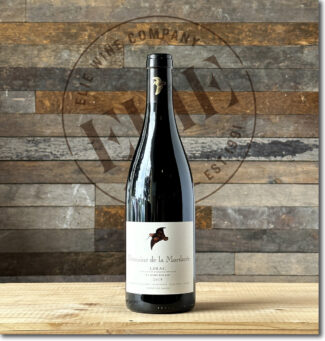 Domaine de la Mordorée ‘La Dame Rousse’, 2019 Lirac ($25)
Domaine de la Mordorée ‘La Dame Rousse’, 2019 Lirac ($25)
The ‘Redheaded Lady’ is a blend of 50% Grenache and 50% Syrah grown on 50 acres of 40-year-old vines. It’s loaded with smoky black cherries, licorice, scorched terra cotta and a richly expressed minerality that is characteristic of this pebble-littered terroir.
RECENT ARRIVAL
In 2020 Domaine de la Mordorée
Châteauneuf-du-Pape Finds Its Balance
One does not simply walk into Mordor, and one does not simply ignore new arrivals from Mordorée. From the vintage that Robert Parker’s Wine Advocate calls ‘the year where balance came naturally.’
These latest addition to our Mordorée portfolio are examples of exactly that quality:
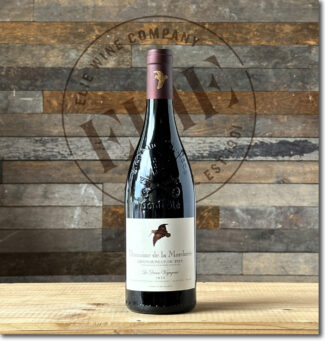 Domaine de la Mordorée ‘La Dame Voyageuse’, 2020 Châteauneuf-du-Pape ($69)
Domaine de la Mordorée ‘La Dame Voyageuse’, 2020 Châteauneuf-du-Pape ($69)
A fragrant and spicy Châteauneuf that marries richness and structure with finesse. The fine tannins build beautifully toward a beautifully dry finish, where spicy and chalky elements mingle with just a hint of milk chocolate.
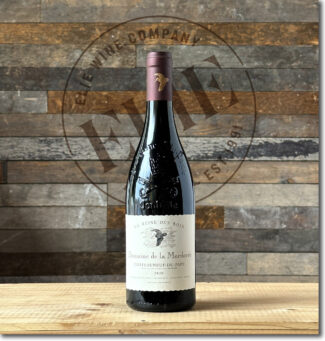 Domaine de la Mordorée ‘La Reine des Bois’, 2020 Châteauneuf-du-Pape ($99)
Domaine de la Mordorée ‘La Reine des Bois’, 2020 Châteauneuf-du-Pape ($99)
A blend of 75% old vine Grenache with Mourvedre, Syrah, Vaccarèse and Counoise. On the nose is an inviting bouquet of dark forest berry fruit, some nougat and tobacco spice, delicately underpinned by savory herbs. The juicy palate is powerful and sweet, with ripe, round tannins, ripe cherry and wild berry fruit, mineral and delicately saline on the finish.
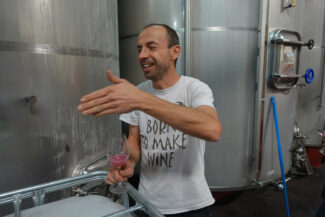
Rémy Chauvet, Winemaker at Domaine de la Mordorée
Notebook …
Can The Southern Rhône Take The Heat?
While the steady onslaught of climate change is transforming previously unsuitable land into vine country, reliable AOPs in Southern Rhône have to contend with these changes as part of their new normal. Some are responding better than others, adopting practices to mitigate drought (longer maceration times for nearly dry grapes and cover-crop maintenance) and adjusting to new harvest times. Others are a bit slower on the uptake. Never before has the mark of the winemaker been more important in knowing what you’ll find inside the bottle.
The sad irony of climate change is that it comes at a time when Southern Rhône winemakers are enjoying a renaissance in style, leaving behind their candied fruit-bomb bistro wines of lore, and evolving into a more terroir-focused product with considerably more ambition.
That said, the finest in any crop of vigneron will rise to the top like grape skins under ferment. It will be a pleasure to watch them evolve with the challenges.
2021 Southern Rhône
A mild winter was followed by a warm early spring and a hard frost, then intermittent rainfall and generally cooler conditions throughout the season, except for a hot June and July. There is an overall bright feel to the wines, and at alcohols that are more or less a degree down on last year.
2020 Southern Rhône
A mild winter followed by a hot, dry summer with slightly cooler nights led to wines with good freshness and balance. Ideal harvest conditions resulted in a stress-free vintage with solid yields. With generous, supple fruit profiles and accessible tannins, the wines stand out for their immediate drinkability, though quality is more heterogeneous.
2019 Southern Rhône
A wet winter set the table for the region’s vineyards to get through the hot, dry growing season, with Grenache and Mourvèdre excelling as harvest lingered into early October. Reds are rich, ripe and expressive, with refined textures. A gorgeous vintage that just lacks the spine to be among the truly elite years.
2018 Southern Rhône
The growing season was marred by spring rains that led to severe mildew pressure, severely hampering Grenache yields. Summer was hot and dry, with nights not as cool as usual, but there were no heat spikes. Reds are supple and velvety, low in acid, offering flattering, forward fruit.
- - -
Posted on 2023.07.29 in Châteauneuf-du-Pape, Lirac, France, Wine-Aid Packages, Southern Rhone
Featured Wines
- Notebook: A’Boudt Town
- Saturday Sips Wines
- Saturday Sips Review Club
- The Champagne Society
- Wine-Aid Packages
Wine Regions
Grape Varieties
Aglianico, Albarino, Albarín Blanco, Albarín Tinto, Albillo, Aleatico, Aligote, Arbanne, Aubun, Barbarossa, barbera, Biancu Gentile, bourboulenc, Cabernet Franc, Caino, Caladoc, Calvi, Carcajolu-Neru, Carignan, Chablis, Chardonnay, Chasselas, Cinsault, Clairette, Corvina, Counoise, Dolcetto, Erbamat, Ferrol, Frappato, Friulano, Fromenteau, Gamay, Garnacha, Garnacha Tintorera, Gewurztraminer, Graciano, Grenache, Grenache Blanc, Groppello, Juan Garcia, Lambrusco, Loureira, Macabeo, Macabou, Malbec, Malvasia, Malvasia Nera, Marcelan, Marsanne, Marselan, Marzemino, Mondeuse, Montanaccia, Montònega, Morescola, Morescono, Moscatell, Muscat, Natural, Niellucciu, Parellada, Patrimonio, Pedro Ximénez, Petit Meslier, Petit Verdot, Pineau d'Aunis, Pinot Blanc, Pinot Gris, Pinot Meunier, Pinot Noir, Pouilly Fuisse, Pouilly Loche, Poulsard, Prieto Picudo, Riesling, Rondinella, Rousanne, Roussanne, Sagrantino, Sauvignon Blanc, Savignin, Sciacarellu, Semillon, Souson, Sparkling, Sumoll, Sylvaner, Syrah, Tannat, Tempranillo, Trebbiano, Trebbiano Valtenesi, Treixadura, Trousseau, Ugni Blanc, vaccarèse, Verdicchio, Vermentino, Xarel-loWines & Events by Date
- May 2024
- April 2024
- March 2024
- February 2024
- January 2024
- December 2023
- November 2023
- October 2023
- September 2023
- August 2023
- July 2023
- June 2023
- May 2023
- April 2023
- March 2023
- February 2023
- January 2023
- December 2022
- November 2022
- October 2022
- September 2022
- August 2022
- July 2022
- June 2022
- May 2022
- April 2022
- March 2022
- February 2022
- January 2022
- December 2021
- November 2021
- October 2021
- September 2021
- August 2021
- July 2021
- June 2021
- May 2021
- April 2021
- March 2021
- February 2021
- January 2021
- December 2020
- November 2020
- October 2020
- September 2020
- August 2020
- July 2020
- June 2020
- May 2020
- April 2020
- March 2020
- February 2020
- January 2020
- December 2019
- November 2019
- October 2019
- September 2019
- August 2019
- July 2019
- June 2019
- May 2019
- April 2019
- March 2019
- February 2019
- January 2019
- December 2018
- November 2018
- October 2018
- September 2018
- August 2018
- July 2018
- June 2018
- May 2018
- April 2018
- March 2018
- February 2018
- January 2018
- December 2017
- November 2017
- October 2017
- September 2017
- August 2017
- July 2017
- June 2017
- May 2017
- April 2017
- March 2017
- February 2017
- January 2017
- December 2016
- November 2016
- October 2016
- September 2016
- August 2016
- July 2016
- June 2016
- May 2016
- April 2016
- March 2016
- February 2016
- January 2016
- December 2015
- November 2015
- October 2015
- September 2015
- August 2015
- July 2015
- June 2015
- May 2015
- April 2015
- March 2015
- February 2015
- January 2015
- December 2014
- November 2014
- October 2014
- September 2014
- August 2014
- July 2014
- June 2014
- April 2014
- March 2014
- February 2014
- January 2014
- December 2013
- November 2013
- October 2013
- September 2013
- August 2013
- July 2013
- June 2013
- May 2013
- April 2013
- March 2013
- February 2013
- January 2013
- December 2012
- November 2012
- October 2012
- February 2004
Search



